Passover Haggadah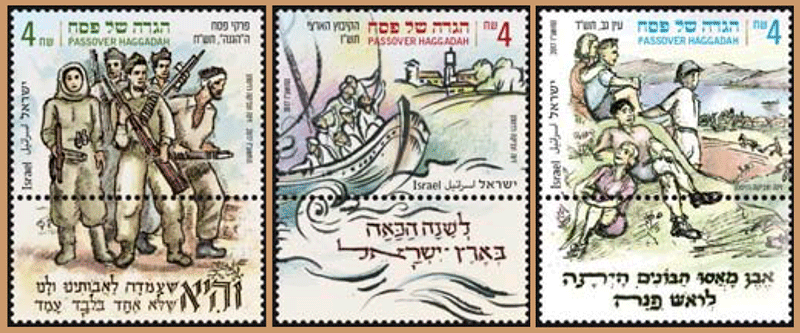 Issue date April 4, 2017
Issue date April 4, 2017
Hundreds of different Passover Haggadahs have been designed at kibbutzim, by kibbutz movements, pioneer trainings, youth groups tied to the kibbutz movement, in Hebrew military units that operated in Eretz Israel during WWII, by groups of those uprooted in Europe after the war, by Jews attempting to enter Eretz Israel illegally during the British Mandate, by the Haganah, the Palmach and the IDF.
These Haggadahs were geared toward large public Seders, which were very different than an intimate family Seder. These public Seders were more like the mass pilgrimages of ancient times. At the Seder, participants read biblical chapters related to the exodus from Egypt and discussed Moses, who is not mentioned in the traditional Haggadah. When the Holocaust became known, a heart wrenching memorial prayer was added to the Seder.
These non-traditional Haggadahs meant no disrespect to the story of the exodus from Egypt. Their authors felt that they were the ones who had been enslaved and were going forth into freedom. At the Passover Seder they expressed the spring, the love in the Song of Songs and the story of their times, which they had lived through personally. These Haggadahs included Hebrew literature and chapters on current events.
Over the years, many traditional texts were brought back into the Haggadahs, but they continued to include poems, chapters on spring, the Song of Songs and the biblical story of the exodus from Egypt.
The editors of the texts in these Haggadahs were members of the various groups that conducted the Seders, including teachers, authors and cultural figures. Some of the most well known Israeli and local artists and illustrators contributed illustrations to the Haggadahs. The three Haggadahs featured on the stamps represent three Zionist values: security, Aliyah and settlement.
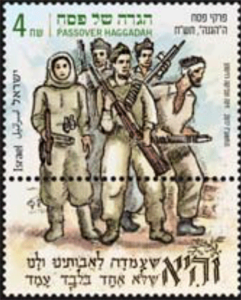 The Kibbutz Artzi Federation, 1944 (Aliyah)
The Kibbutz Artzi Federation, 1944 (Aliyah)
Avraham (Tushek) Amarent was a member of Kibbutz Mizra, an artist and a scholar. He bequeathed all of his artistic works to his kibbutz. He decorated for the Seder and was among the designers of the Haggadah that was used by all the Kibbutz Artzi Federation kibbutzim. He wrote in his memoirs: “… when the spring returned, the Jewish people were in danger of being annihilated in the diaspora, Eretz Israel was at war and the human spirit reinforced the longing for salvation and freedom”. Illustration courtesy of Dalia Hadshi.
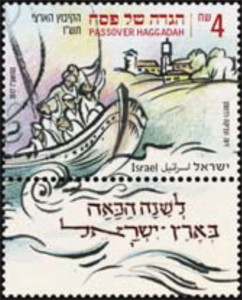 Pirkei Pesach (Passover Chapters), Haganah, 1948 (security)
Pirkei Pesach (Passover Chapters), Haganah, 1948 (security)
This Haggadah was written and edited by the Haganah cultural service for Haganah soldiers during Israel’s War of Independence. It was titled: For the Festival of Freedom – Chapters for Passover Parties, 1948. It was purposely not called a Haggadah in order to preserve the honor of the traditional Haggadah.
It was designed by artist Arieh Allweil, one of the founders of the Hashomer Hatzair kibbutzim who specialized in traditional script and painting Jewish motifs.
Photos of the Haggadah from the National Library collection, Jerusalem.
Illustrations courtesy of Ruth Sperling.
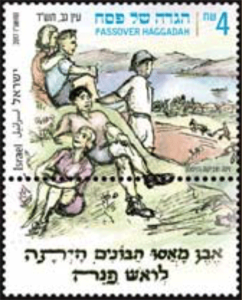 Kibbutz Ein Gev, 1944 (settlement)
Kibbutz Ein Gev, 1944 (settlement)
In 1943, when the Holocaust became known, a “black” Haggadah was prepared at Ein Gev. A year later Ludwig Schwerin, who was close to the members of the kibbutz, designed a Haggadah of consolation featuring a view of the kibbutz: a group of members and children overlooking the kibbutz from Mount Sussita – an expression of hope despite the ongoing world war. Photos of the Haggadah: Ein Gev archive; illustrations courtesy of Dorit Bodker and Anat Fuchs.
Muki Tsur
Researcher and educator, member of Kibbutz Ein Gev. Co-wrote with Yuval Danieli the book “Leaving in the Month of Spring” (Passover Haggadahs from the kibbutz), .2004
Co-edited the book by Zvi Shuah “Today you Leave for a New Land” (texts from the Kibbutz Haggadah), 2011.
Aviram Paz
Author of the book “The Exodus from Egypt – Then and Now” (rare Haggadahs from the 1940’s), Maarechet Publishing House, Kibbutz Dalia, 2015.
The three stamps in the series are issued in stamp sheets with decorated margins. The margin designs are based on the Haggadah featured in each stamp.
The FDC design is based on the Kibbutz Artzi Haggadah. 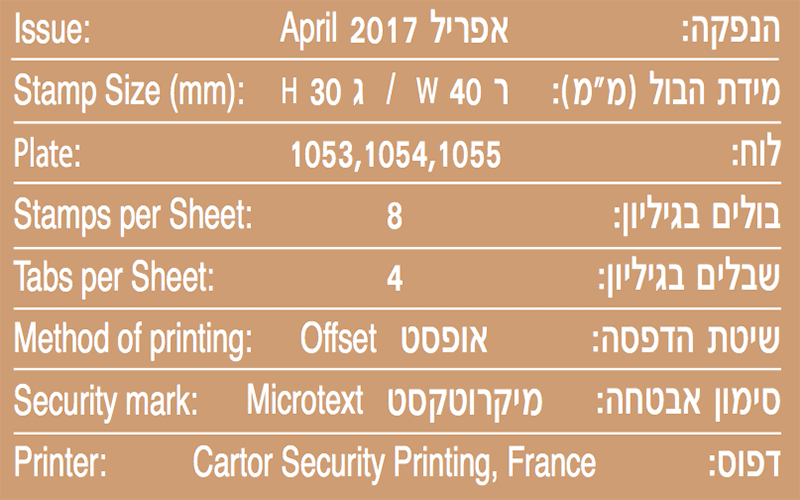
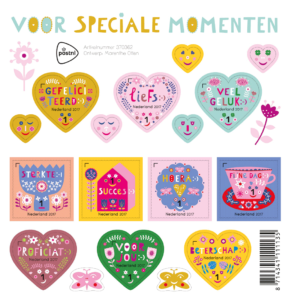 Many of life’s special moments deserve personal attention. For that reason, the ten stamps feature wishes including gefeliciteerd (Congratulations), liefs (Love), veel geluk (Lots of luck), sterkte (Feel better), succes (Good luck), hoera (Hooray), fijne dag (Have a nice day), proficiat (Well done), voor jou (For you) and beterschap (Get well soon). Every stamp features an emoticon; a face depicted by punctuation marks. The stamp sheetlet also contains seven stickers that can be used to decorate the envelope or card, also with an emoticon.
Many of life’s special moments deserve personal attention. For that reason, the ten stamps feature wishes including gefeliciteerd (Congratulations), liefs (Love), veel geluk (Lots of luck), sterkte (Feel better), succes (Good luck), hoera (Hooray), fijne dag (Have a nice day), proficiat (Well done), voor jou (For you) and beterschap (Get well soon). Every stamp features an emoticon; a face depicted by punctuation marks. The stamp sheetlet also contains seven stickers that can be used to decorate the envelope or card, also with an emoticon.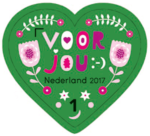 For this stamp sheetlet, Marenthe Otten designed both heart-shaped and square stamps. “The focus of each stamp is a wish appropriate to a special moment in the life of a loved one. The shape of a heart or flower emphasises the personal nature of the message. These wishes are in the form of colourful handwriting with cheery illustrations,” says the designer.
For this stamp sheetlet, Marenthe Otten designed both heart-shaped and square stamps. “The focus of each stamp is a wish appropriate to a special moment in the life of a loved one. The shape of a heart or flower emphasises the personal nature of the message. These wishes are in the form of colourful handwriting with cheery illustrations,” says the designer.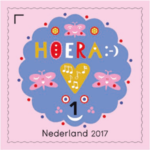 The ‘For Special Moments’ stamp sheetlet consists of ten stamps marked with ‘Nederland 1’, which can be used for items weighing up to 20g destined for mail in the Netherlands. These stamps will be available from 27 March at all Bruna shops and via Collectclub.nl. From 10 April the stamp sheetlet will be available from all PostNL sales points. The stamps are valid until further notice.
The ‘For Special Moments’ stamp sheetlet consists of ten stamps marked with ‘Nederland 1’, which can be used for items weighing up to 20g destined for mail in the Netherlands. These stamps will be available from 27 March at all Bruna shops and via Collectclub.nl. From 10 April the stamp sheetlet will be available from all PostNL sales points. The stamps are valid until further notice.
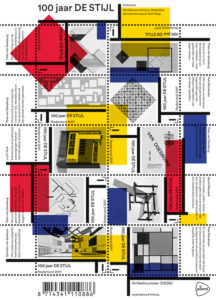 On Monday 27 March, PostNL issues the De Stijl (“The Style”) Centennial stamp sheetlet, celebrating this influential 20th century Dutch art movement. The stamps feature iconic works by Theo van Doesburg, Piet Mondriaan, Cornelis van Eesteren, Gerrit Rietveld and J.J.P. Oud. As artist, designer or architect, all are important representatives of De Stijl. At the Gemeentemuseum Den Haag, mayor Pauline Krikke received [in advance] the first issue of the De Stijl Centennial stamps from Herna Verhagen, CEO of PostNL [photo below].
On Monday 27 March, PostNL issues the De Stijl (“The Style”) Centennial stamp sheetlet, celebrating this influential 20th century Dutch art movement. The stamps feature iconic works by Theo van Doesburg, Piet Mondriaan, Cornelis van Eesteren, Gerrit Rietveld and J.J.P. Oud. As artist, designer or architect, all are important representatives of De Stijl. At the Gemeentemuseum Den Haag, mayor Pauline Krikke received [in advance] the first issue of the De Stijl Centennial stamps from Herna Verhagen, CEO of PostNL [photo below].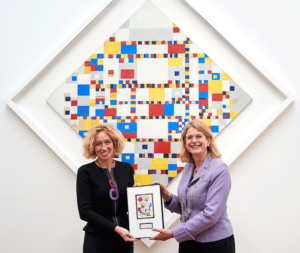 connecting itself with Mondriaan and his De Stijl contemporaries. Our city is also closely linked via the Gemeentemuseum Den Haag. Only this museum has organised three large exhibitions, including The Discovery of Mondriaan featuring 300 art works by the internationally renowned artist. This stamp sheetlet will enable the Netherlands to become acquainted with the founders of this art movement in a whole new way.”
connecting itself with Mondriaan and his De Stijl contemporaries. Our city is also closely linked via the Gemeentemuseum Den Haag. Only this museum has organised three large exhibitions, including The Discovery of Mondriaan featuring 300 art works by the internationally renowned artist. This stamp sheetlet will enable the Netherlands to become acquainted with the founders of this art movement in a whole new way.” Issue date April 4, 2017
Issue date April 4, 2017 The Kibbutz Artzi Federation, 1944 (Aliyah)
The Kibbutz Artzi Federation, 1944 (Aliyah) Pirkei Pesach (Passover Chapters), Haganah, 1948 (security)
Pirkei Pesach (Passover Chapters), Haganah, 1948 (security) Kibbutz Ein Gev, 1944 (settlement)
Kibbutz Ein Gev, 1944 (settlement)
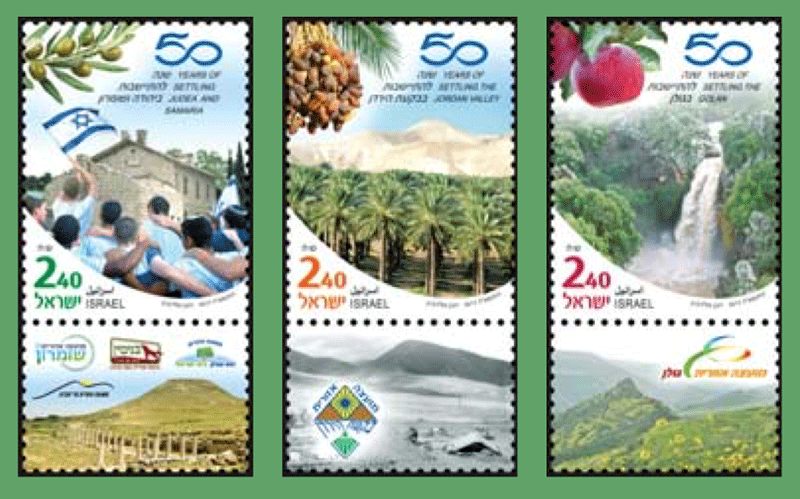 Issue date April 4, 2017
Issue date April 4, 2017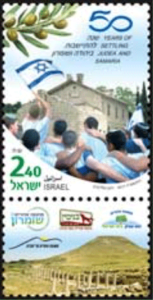 Day War, the Israeli government led by Prime Minister Levi Eshkol adopted a plan to establish towns in the Golan Heights and the Jordan Valley, and within a decade dozens of new communities were established in these areas. The momentum of establishing new settlements in Judea and Samaria grew in the mid-1970’s, and increased significantly from 1977 after the new government headed by Prime Minister Menachem Begin took office.
Day War, the Israeli government led by Prime Minister Levi Eshkol adopted a plan to establish towns in the Golan Heights and the Jordan Valley, and within a decade dozens of new communities were established in these areas. The momentum of establishing new settlements in Judea and Samaria grew in the mid-1970’s, and increased significantly from 1977 after the new government headed by Prime Minister Menachem Begin took office.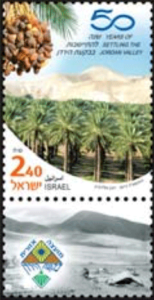 Remnants of ancient Jewish towns have been unearthed in archeological excavations near many of the new communities in the Golan Heights, Jordan Valley and Judea and Samaria. These communities renew and strengthen the historical bond between the Jewish people and its historic homeland.
Remnants of ancient Jewish towns have been unearthed in archeological excavations near many of the new communities in the Golan Heights, Jordan Valley and Judea and Samaria. These communities renew and strengthen the historical bond between the Jewish people and its historic homeland.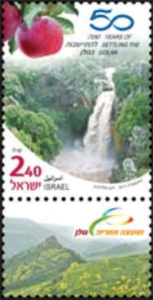
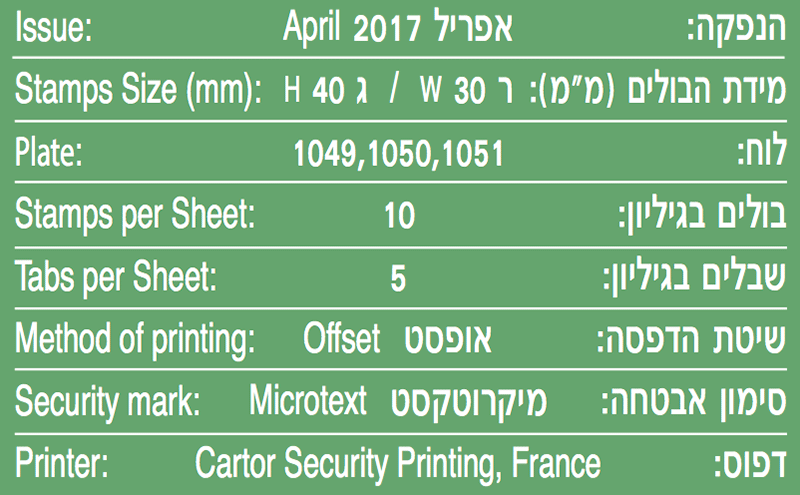
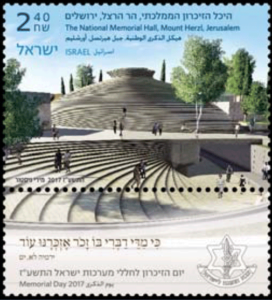 The letter card, cover and stamp – all of which are special and unique to Memorial Day – constitute the basis of a sensitive, original and extraordinary tradition that came into being following the War of Independence.
The letter card, cover and stamp – all of which are special and unique to Memorial Day – constitute the basis of a sensitive, original and extraordinary tradition that came into being following the War of Independence.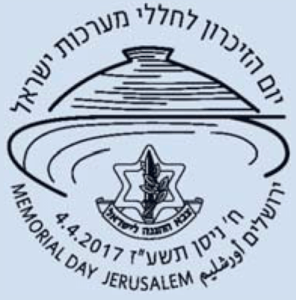 The Memorial Hall’s location at Mount Herzl – the pantheon of Israeli heroism, constitutes a continuation of the Zionist vision of revival and realization.
The Memorial Hall’s location at Mount Herzl – the pantheon of Israeli heroism, constitutes a continuation of the Zionist vision of revival and realization.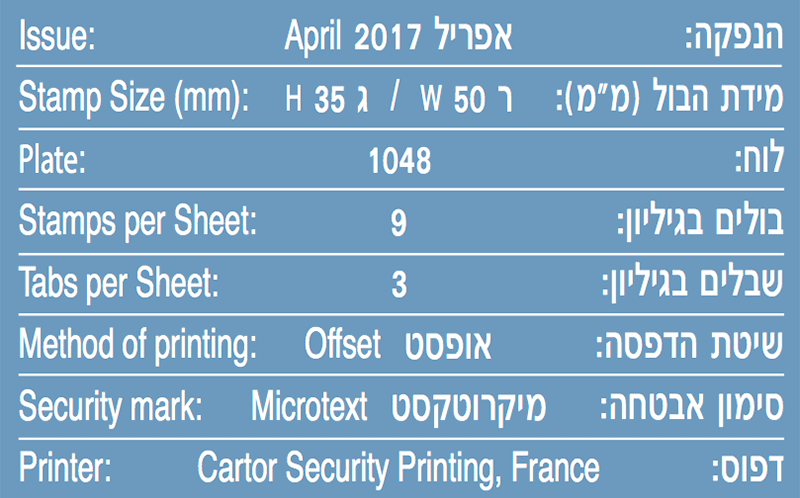
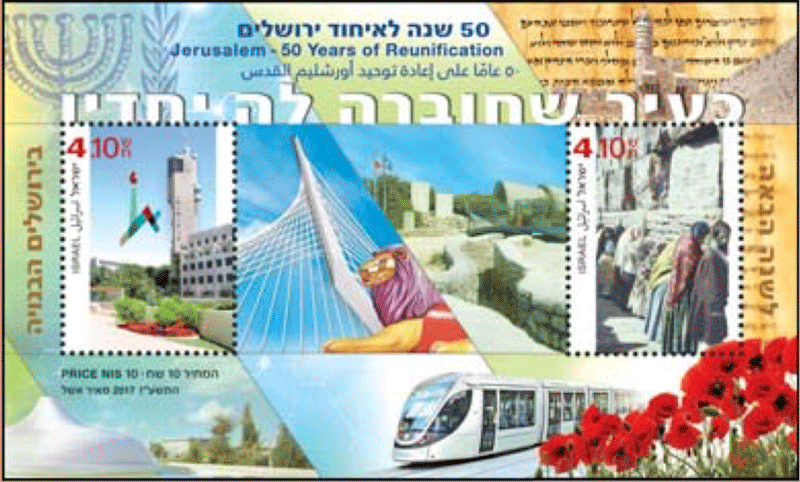
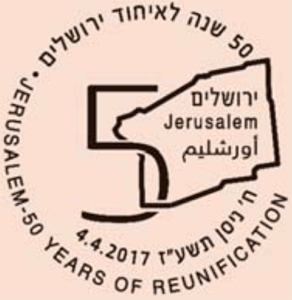 On the 50th anniversary of the unification of Jerusalem, the State of Israel is marking the historic event that took place in June 1967 with a series of events in Israel and abroad.
On the 50th anniversary of the unification of Jerusalem, the State of Israel is marking the historic event that took place in June 1967 with a series of events in Israel and abroad.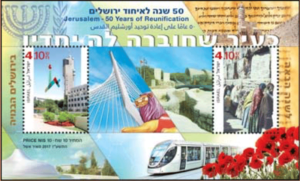 Description of the Souvenir Sheet
Description of the Souvenir Sheet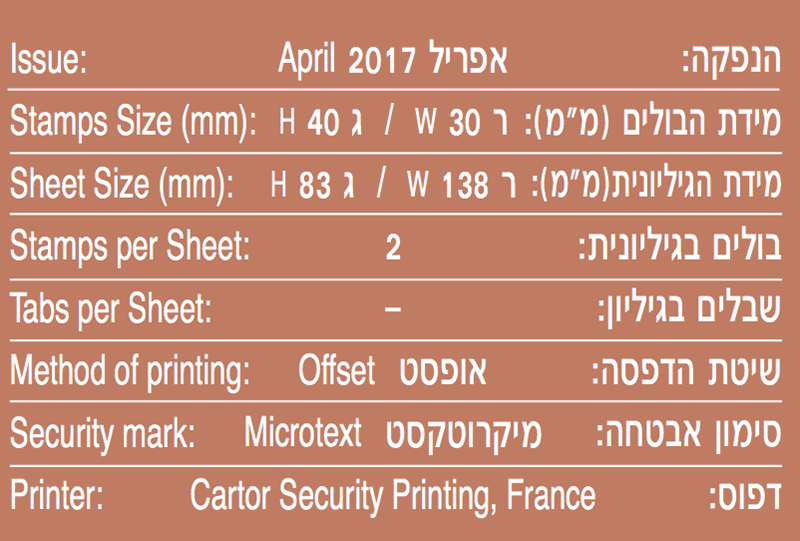
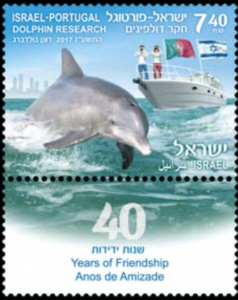 The diplomatic relations between Israel and the Portuguese Republic developed in stages. An Israeli consulate was first opened in Lisbon in the late 1950’s. After the Carnation Revolution in Portugal in April 1974, this was upgraded to a general consulate and in 1977 to an embassy, the highest indication of full diplomatic relations. Since then the two countries have benefitted from friendly and collaborative relations in many fields.
The diplomatic relations between Israel and the Portuguese Republic developed in stages. An Israeli consulate was first opened in Lisbon in the late 1950’s. After the Carnation Revolution in Portugal in April 1974, this was upgraded to a general consulate and in 1977 to an embassy, the highest indication of full diplomatic relations. Since then the two countries have benefitted from friendly and collaborative relations in many fields. During WWII, many Jews passed through Portugal, mostly immigrating to other countries and later also to Israel.
During WWII, many Jews passed through Portugal, mostly immigrating to other countries and later also to Israel.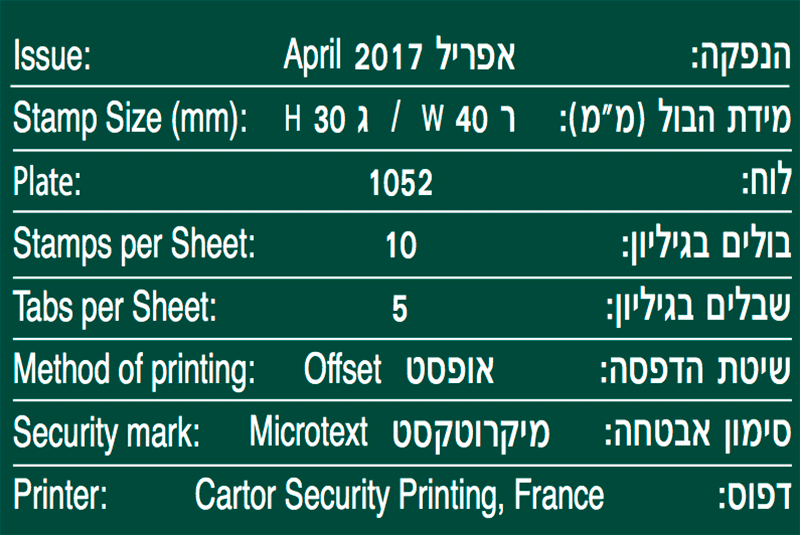
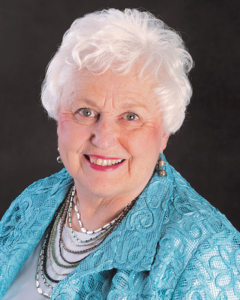 For her wide-ranging contributions to philately,
For her wide-ranging contributions to philately, 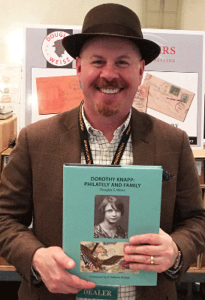 All articles published in First Days, the AFDCS journal, are automatically considered. Others may be submitted to the Ward Award Committee chair, Mark Goodson, 202 W. Temperance Street, Ellettsville, IN 47429, bgdsn@comcast.net.
All articles published in First Days, the AFDCS journal, are automatically considered. Others may be submitted to the Ward Award Committee chair, Mark Goodson, 202 W. Temperance Street, Ellettsville, IN 47429, bgdsn@comcast.net.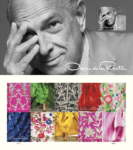 5173 Oscar de la Renta pane of 11
5173 Oscar de la Renta pane of 11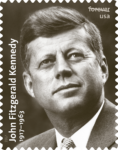 5174 (21¢) People Wearing Uncle Sam’s Hats
5174 (21¢) People Wearing Uncle Sam’s Hats

